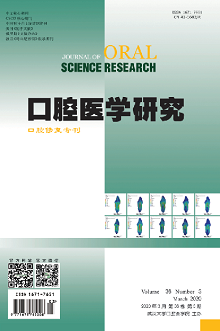|
|
Retrospective Analysis of 76 Cases of Anterior Teeth Restored by CEREC with Different Design Patterns
HAN Yanfeng, JIANG Qingsong, ZHENG Dongxiang
2020, 36(3):
287-292.
DOI: 10.13701/j.cnki.kqyxyj.2020.03.023
Objective: To explore the application of veneer made by CEREC with different design patterns in the anterior area. Methods: The clinical data of 76 patients who underwent anterior veneer restoration were retrospectively analyzed. 190 veneers were made using CEREC AC system. Different design modes were chosen according to actual situation of the tooth defect. The design pattern, processing time, patients’ satisfaction degree, and clinical success rate after 6 months, 12 months, and 24 months were compared. Results: Of all the 190 porcelain veneers, 84 use copy mode, 50 use reference mode, and 56 use individual design patterns. The restoration design and processing time of the replication mode was shorter than the reference mode and the personalized mode (P<0.001), and the reference mode was shorter than the personalized mode (P<0.001). There was no significant difference in the satisfaction scores of VAS repair between different design patterns at different follow-up time (P>0.05). After 6 months, the success rates of replication mode, reference mode, and personalized mode were 97.62%, 98.00%, and 94.64%, respectively. The success rates after 12 months were 97.62%, 96.00%, and 92.86%, respectively. The success rates after 24 months were 96.43%, 94.00%, and 92.86%, respectively (P>0.05). Conclusion: All the porcelain veneers made by different design modes of CEREC AC system have good aesthetic effect and high clinical success rate. The copy mode can accurately copy the bite, and the design and processing time are relatively shorter, which can be used as the first choice.
References |
Related Articles |
Metrics
|

